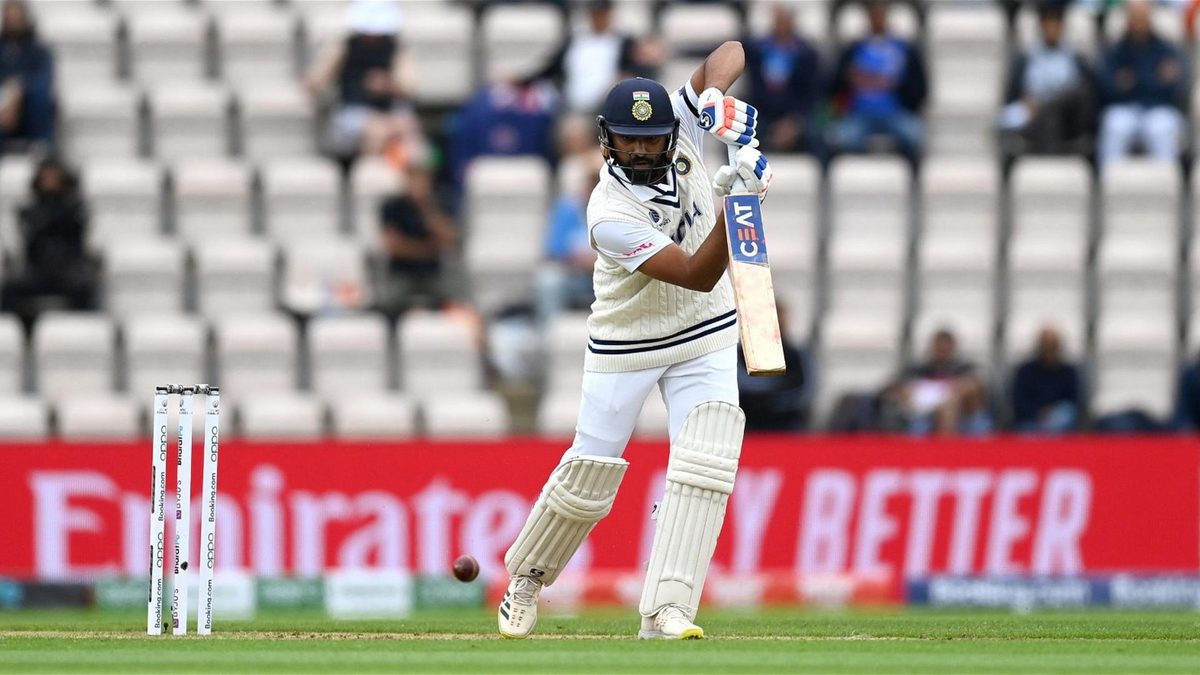
Few Test careers have invited as much scrutiny as Rohit Sharma’s and questions still hang over his ability on overseas soil. After the Australia series and his WTC final efforts, we finally have a first impression of Rohit the opener in overseas Tests.
Subscribe to the Wisden Cricket YouTube channel for post-match awards, player interviews, analysis and much more.
India flirted with the idea of Rohit Sharma the middle-order batsman in Test cricket for quite a while before moving on from him, only for the Mumbaikar to be recalled in a different position in 2019 — as opener, a role he had fulfilled with exceptional returns in the limited-overs formats over the past few years.
Like with the middle-order role, Rohit started off with a bang, making 176 and 127 against South Africa in Vizag. A double hundred soon followed as Rohit cemented his spot at the top of the order. But even as his form invited accolades from all quarters, there were murmurs about his ability in handling swing and seam in overseas conditions as an opener. It’s worth noting that his middle-order returns fell off after a honeymoon period as India had tough tours of England, New Zealand, Australia and South Africa.
The New Zealand series in early 2020 was supposed to be Rohit’s litmus test, but injury meant that he never made the trip; the Border-Gavaskar series in Australia saw Rohit opening in an overseas Test for the first time. He missed the first two Tests in Australia – including the 36 all out debacle in Adelaide – and returned to replace Mayank Agarwal at the Sydney Cricket Ground.
After the series Down Under and the two knocks in the WTC final, we finally have seen enough of Rohit to come to some early conclusions.
How have Rohit’s returns changed?
Opening the batting with Rohit was a move that only happened because India’s cupboard was strangely bare. In the middle-order, Rohit averages 39.62 after 47 Test innings, with eight of his 12 Test scores of fifty or more coming in India. A further two came in Sri Lanka. It’s important to split his returns to home and away as they stand in complete disagreement to each other. In home Tests, Rohit averages 85.44, but in away Tests, the average drops to the mid-20s.
Since opening the bating, Rohit’s overall numbers have gone through the roof. At the top after 12 Tests, Rohit averages 60.77 with four hundreds and two fifties. Yet again, the gap between home and away returns is quite wide. At home, Rohit averages 75.08 with four hundreds and a fifty. But the returns, in terms of runs, aren’t as promising overseas, with an average of 32.16 (including the WTC final at a neutral venue).
That said, Rohit’s returns in the Australian series and in the two innings in the WTC final cannot be viewed in the context of just runs. Even if the batting average away from home hasn’t seen a heavy transformation, what’s changed is his ability to stay put at the crease against quality bowling.
Despite not kicking on after starts – something we know he is capable of doing – Rohit seems to have found the best gear for him to operate in in conditions that were believed to be too alien for him to conquer. In six away innings so far as opener, Rohit has played 70 balls on an average. In five of his six innings since the Sydney Test, Rohit has played over 60 balls, and alongside Shubman Gill he has forged an opening partnership that has become increasingly reliable.
What has led to Rohit’s Test transformation?
A feature of Rohit’s batting is his range of strokes, and the ease with which he pulls them off. The aesthetics of his cover-driven loft for six off Pat Cummins in the Australian series Down Under in 2018/19 still generates gasps. But until recently, that’s pretty much all Rohit’s Test career overseas has generated — fits of disbelief and heart-eye emojis interrupted by his own poor judgement. For a naturally attacking batsman to curb his instincts is far from easy. It has played a role in Rohit’s stop-start Test career, but since his return as Test opener, Rohit has been prepared to bide his time at the wicket, leave well outside off-stump and make technical adjustments to counter specific conditions and bowlers.
Noticeably, Rohit has been picking and choosing the line and length to go after. In the first innings of the WTC final for instance, Rohit did not score off a single ball on good length, but cashed in when the length was fuller or shorter. Batting outside the crease, like Virat Kohli did successfully in England in 2018, Rohit’s judgement was immaculate under overcast skies against a top quality attack.
That innings, in conditions where his failure could be predicted previously without batting an eyelid, can be labelled as Rohit’s biggest test overseas yet, and he came through, facing 68 balls and importantly batting on until after the 20th over against one of the best pace attacks of modern times. When he was dismissed, it needed a top quality delivery — one that swung extravagantly from New Zealand’s best bowler in the Test, Kyle Jamieson.
That delivery, essentially, is what separates the Rohit of old and the Rohit of today. It needs a really good delivery for the Rohit of today to be seen off, forget the conditions, forget the opposition bowlers. He may not have the scores yet to show for his obvious transformation as a Test batsman, but the tools are well and truly in place to expect a fruitful summer ahead, and to suggest Rohit could yet be a great in all formats..








